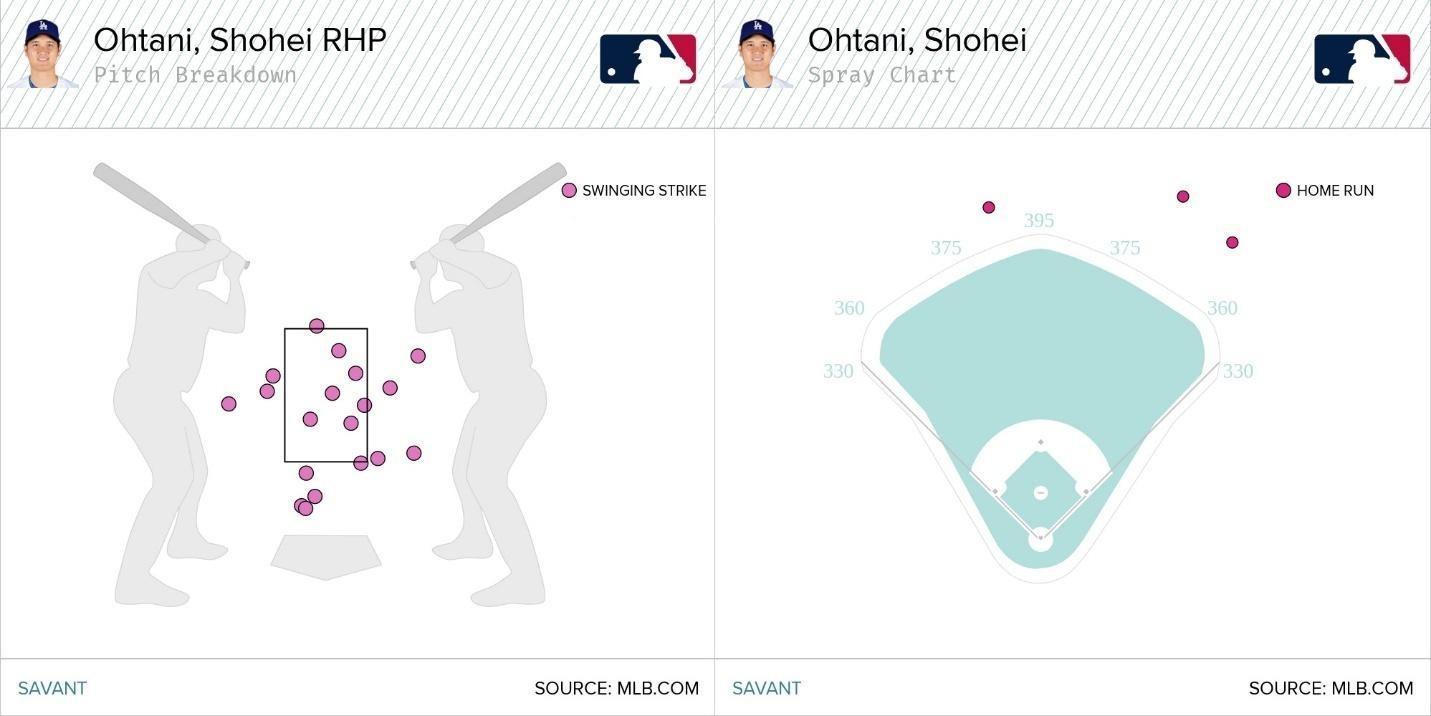
On Friday night in Los Angeles, the Los Angeles Dodgers secured a second consecutive pennant by beating the Milwaukee Brewers 5-1 in NLCS Game 4. They dispatched the team with MLB’s best regular-season record so swiftly and soundly that the National League’s World Series warm-up ended a full week before the Fall Classic was scheduled to start.
Postseason sweeps leave a lot of airtime to fill, so that week will be filled with fretting about the sport’s supervillains. Are the Mariners or Blue Jays worthy foils for the reigning champs, or are they doomed to be the befuddled Generals to the Dodgers’ glorious Globetrotters? Was this season an exercise in futility for 29 teams that should have saved us all some time by conceding in the spring to the team with the loftiest payroll and highest preseason championship probability? Will the Dodgers’ dominance so disrupt the sport’s equilibrium that it leads to a pitched fight for a salary cap, an extended work stoppage, and a lost season?
There will be ample opportunity to consider whether the Dodgers are breaking baseball in the coming days and months, when subsequent events may make the matter even more pressing. Maybe the Dodgers will sweep the World Series, too, and turn the playoffs into a farce. Maybe they’ll sign no. 1 free agent target Kyle Tucker and make a mockery of the market. Maybe they’ll set the record for the longest postseason appearances streak, and establish beyond any doubt (if any remains right now) that they’re the baddies of baseball.
But on Friday, those concerns seemed distant, even as L.A.’s assortment of superstars made quick work of small-market Milwaukee. Because despite the significance of the Dodgers’ victory, the focus was squarely on Shohei Ohtani, who’s been breaking baseball—in a good way—almost from the moment he turned pro. Fairly or unfairly, Ohtani turned in his folk-hero card among many fans when he went from one (nominally) L.A.-centered team to another, forsaking the perennially hapless Angels for a record contract with the perennially contending Dodgers. It used to be said that rooting for the Yankees was like rooting for U.S. Steel. Nowadays, the Dodgers are the sport’s unsympathetic powerhouse. Yet Ohtani’s exploits sometimes fleetingly transcend tribal team loyalties. He might make you root for the favorites in spite of yourself.
The latest, possibly greatest display of dominance by the 31-year-old pitcher-DH didn’t quell the unrest about baseball’s competitive balance, or assuage the growing resentment of the Dodgers’ capacity to collect other franchises’ faces like so many Infinity Stones. In the long run, Friday’s additions to his highlight reel may even add fuel to the fire. For one night, though, concerns about buying championships, expiring CBAs, and looming lockouts seemed secondary. For one night, we marveled anew at perhaps the most impressive player in baseball history, as he produced perhaps the most impressive postseason game in baseball history. And for one night, Ohtani seemed less like a means to the Dodgers’ success than the Dodgers seemed like a means to Ohtani’s.
Ohtani entered the game as the second-coldest Dodgers hitter in the series. He exited the game as the deserved NLCS MVP. With the Dodgers looking to clinch, Ohtani the starting pitcher threw six scoreless innings, striking out 10 and allowing only two hits and three walks. (One of the walks, and one of the hits, came immediately after he started his seventh frame, propelling his pitch count to 100 and prompting Dodgers skipper Dave Roberts to remove one half of him from the game.) Ohtani the leadoff hitter had a flawless night at the plate, launching three resounding solo home runs that traveled a combined quarter mile, and drawing a walk. (We mustn’t forget the walk.) Ohtani faced 22 Brewers batters and allowed two hard-hit balls in the air. As a hitter, he had three on his own. I mean:

I mean:

Ohtani is the 12th player to go deep three times in a postseason game, and the first to do so in a game he also appeared in as a pitcher. (Babe Ruth, the only player to twice post a playoff tater trifecta, did so long after his regular mound days were done.) Baseball’s voluminous suite of advanced stats is almost unequal to the task of capturing Ohtani’s holistic contribution to the Dodgers’ win. We don’t have historical single-game WAR figures for the playoffs, which would be ideal, and other commonly cited single-game stats, such as RE24 and win probability added, are heavily context-sensitive. They ding Ohtani because no one was on base when he hit his homers or because the score wasn’t closer when he launched the last two, factors beyond a batter’s control. (Beyond any other batter’s control, at least: If Ohtani the pitcher had been a bit worse, Ohtani the hitter’s homers might have had higher WPAs.)
There is one metric that can more adequately quantify Ohtani’s all-around excellence: WPA/LI, or situational wins, which FanGraphs’ glossary dubs “a win expectancy version of WAR.” WPA/LI divides players’ win probabilities by the leverage index, or stakes, of their opportunities, yielding a measure of their value that accounts to some extent for situational discrepancies. Despite its name, WPA/LI isn’t entirely context-neutral. Nor is it completely comprehensive. (It doesn’t incorporate fielding, for instance.) But it provides a solid, consistent accounting that works across eras, and it’s probably the best tool we have (albeit a blunt one) for the somewhat squishy task of determining whether an individual game was “better” than another.
As calculated by Baseball Reference, Ohtani amassed .49 WPA/LI as a hitter and .22 WPA/LI as a pitcher, for a combined total of .71 situational wins. In other words, Ohtani was worth 71 percent of a win by himself—which, frankly, feels about right, given that he held the Brewers scoreless for two-thirds of the game and generated most of the Dodgers’ runs without any help from his teammates. Essentially, Ohtani sealed the series single-handedly. Granted, he used two hands: He threw right, batted left, and beat the Brewers from both sides.
The table below lists the top 20 postseason games by WPA/LI in AL-NL history. Ohtani ranks no. 2 all time, behind Pablo Sandoval’s three-homer outburst in Game 1 of the 2012 World Series.
It’s somewhat counterintuitive that Ohtani trails Sandoval: The two had similar batting lines in their respective standout games (three homers with a walk vs. three homers with a single), and Sandoval didn’t pitch. The ordering is an artifact of how the stat’s arcane construction handles those pesky situational factors: WPA/LI gives Sandoval extra credit for hitting a two-run homer, for instance, and for going deep twice with two outs. (Park factors matter too.) As Dan Hirsch of Baseball Reference says, “Sure does feel like Ohtani's game is more special, but it doesn't seem as obvious in the data.” Even so, Ohtani’s instantly legendary game leads a lot of inner-circle October classics on the list, from Ruth’s and Jesse Haines’s heroics in the 1926 World Series, to Roy Halladay’s no-hitter in the 2010 NLDS, to Don Larsen’s perfect game in 1956, to Orel Hershiser’s shutout (with three hits at the plate) in 1988, to Reggie Jackson’s “Mr. October” game, to Blake Snell’s Game 1 gem in the very same series Ohtani just made his own.
Even a stat so sophisticated that it has a slash in its name can’t quite do justice to Ohtani’s two-way tour de force, but more subjective criteria can pick up the slack. Have you ever seen someone who hit three homers also shove on the mound? Have you ever seen someone who struck out 10 batters hit three taters to boot? No? Well, what other numbers do you need? Maybe the quotes, sounds, and sights will suffice—sights such as future Hall of Famer Freddie Freeman putting his hands on his head in stunned disbelief after Ohtani’s 469-foot blast cleared the roof in right-center …
… which preceded the shot Ohtani somehow inside-outed to left on a 99-mph pitch:
“The one that went out of the stadium kind of took everybody’s breath away,” Mookie Betts said, and “everybody” included the crowd. Here’s Dave Roberts: “No one’s ever seen something like this.” And Kiké Hernandez: “There’s only one person who can do that in the world, and in the history of this game, and it’s him.” And Andrew Friedman: “It’s the limitations of the human brain. We can’t comprehend just how special this is and how unique. It’s one of one.” We’ve been hearing that refrain for several years, and the thrill of the words has worn off. The thrill of the pitching and hitting hasn’t.
We could nitpick, perhaps. We draw a distinction between regular-season and postseason games because the latter are meaningfully more arduous, suspenseful, and consequential. We could also draw distinctions among postseason games and series. Ohtani’s two-way wonders would have been extra crucial if they’d come in the World Series, or in a more tightly contested NLCS. And if we’re getting greedy: He could have gone eight or nine innings, à la Snell and Yoshinobu Yamamoto in Games 1 and 2, respectively, or he could have hit four homers. But hey, he still has the World Series to work with. As Dodgers president Stan Kasten said, “Let’s see if he can top it. Can you put it past him? I do not.”
So, will NLCS Game 4—probably Ohtani’s best batting/pitching game—forever be known as “the Ohtani Game”? Or is the hitting clinic he put on last September 19—6-for-6 with three homers, two doubles, and two steals, including the swipe that put him in the 50-50 club, the Ohtani Game?
Or is the 2023 WBC final, in which Ohtani struck out teammate Mike Trout to close out the U.S., the Ohtani game?
What about the time on July 23 when he threw a one-hit shutout in Game 1 of a doubleheader and then hit two homers in the second game?
Well, why choose? They’re all Ohtani Games. Ohtani himself may be one of one, but his great games are plural.
And so, at least for one night, it felt fortunate that the Dodgers were playing deep into October again, because it gave Ohtani a chance to have a signature postseason game—the kind MLB fans couldn’t witness when he was in NPB, or on the Angels, or restricted to hitting alone during the Dodgers’ 2024 title run. Who knows how many more chances he’ll have? Even if the Dodgers’ perpetual playoff machine doesn’t break down, Ohtani’s body eventually will. The hope that he can keep this up indefinitely hangs by an elbow ligament that’s already been replaced, braced, and patched together twice.
Even when he’s healthy, Ohtani is never more than a slow week or two away from a chorus of questions about whether he should play two ways. It’s incredible, really; you’d think the doubters would’ve learned their lesson by now. While completing his rehab from elbow surgery and making a mostly dominant (albeit tightly managed) return to the mound this season, Ohtani had essentially the same offensive campaign as in 2024, minus most of the stolen bases. (His wRC+ plummeted all the way from 180 to a second-best-in-baseball 172, mostly because his BABIP slipped slightly; his quality of contact was virtually unchanged.) He’s certain to claim his fourth MVP award in five years, and like the last three, this one will probably be unanimous. And he started the postseason by hitting two homers in the Dodgers’ first wild-card contest against the Reds, and driving in a run in the second, decisive game.
Then he had—the horror!—a seven-game slump at the plate, against two of the best pitching staffs in the sport (which still feared him enough to issue a few free passes).
During the regular season, a seven-game slump is a bad week, one tiny trough in the choppy surface of a 162-game (sea)son. In the postseason, a modest slump is magnified and dissected. And for Ohtani—who made a solid NLDS start on the mound amid the slump—that’s all it takes for some pundits and team personnel to call into question his entire two-way way of life. A piece published by Sports Illustrated before the game on Friday reported on “the question the baseball world is asking: Is his attempt to be a world-class pitcher affecting his status as a world-class hitter?”
SI accurately noted that Ohtani had hit significantly worse on his pitching days (and the days immediately after his pitching performance) than he had on other days this season. That was true in 2021 and 2022, too, though he raked on his mound days in 2023. Ohtani, for his part, disputed that his pitching had affected his hitting and added, understatedly, “I do feel like I was able to just have a pretty good season offensively.” Freeman opined that Ohtani hadn’t hit as well on his start days because “because he’s so in the zone. He wants to pitch so good. It’s almost like he’s not turning off the pitching mind. But then I say that, and [on Friday], he’ll probably lead off the game with a home run.” And lo and behold, he did. The lesson, as always, is that it’s only a matter of time until Ohtani makes the skeptics seem silly, and fulfills (or exceeds) the wildest dreams of the faithful.
No player embodies the Dodgers’ power and resources more so than Ohtani, who can call on an unparalleled surplus of skills. In that sense, he’s a microcosm of the Dodgers’ roster, an embarrassment of athletic (and literal) riches that’s peaked at the right point of the season. Prior to the NLCS, Roberts, referring to Ohtani’s (lack of) hitting in the NLDS, said, “We’re not going to win the World Series with that sort of performance.” The truth is, they could: The Dodgers are that good, as evidenced by a murderer’s row-tation so strong that a guy as good as Ohtani is, justifiably, the team’s fourth starter. But a few more games half as good as Friday’s from a fully operational Ohtani might make repeating seem like a cinch.
“Before this season started, they said, ‘The Dodgers are ruining baseball,’” Dodgers manager Dave Roberts yelled during the postgame festivities, leaning into the team’s heel status harder than Brewers skipper Pat Murphy had played up the Brew Crew’s underdog identity. “Let’s get four more wins and really ruin baseball!”
With that, the spell was broken, and from most fans’ perspectives, the Dodgers went back to being unabashed bullies—which had been fun to forget for a few hours while Ohtani transported us. Only Ohtani possesses the power to hurl a pitch at 102 miles per hour and wallop one at 120, and only Ohtani possesses the power to make people briefly lose sight of the fact that they don’t want the Dodgers to win. That last trick may be the most amazing feat in the repertoire of the most multitalented, awe-inspiring player the sport has ever seen.
Thanks to Dan Hirsch of Baseball Reference, Sean Dolinar and Ben Clemens of FanGraphs, and Tom Tango of MLB for research assistance.

